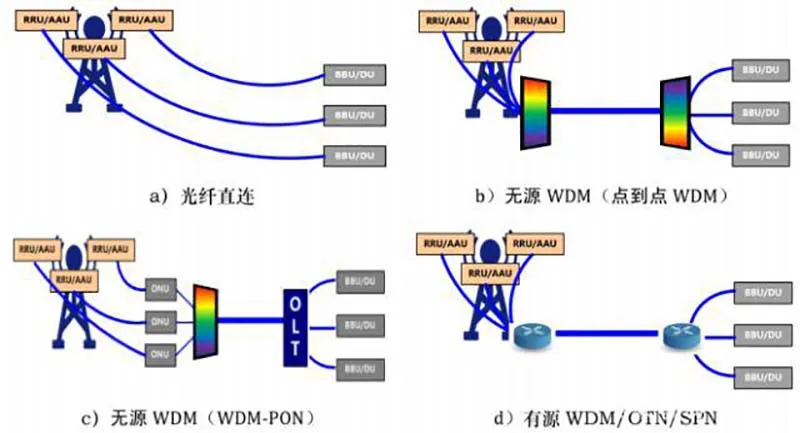(1) Composition of the DWDM System
A Dense Wavelength Division Multiplexing (DWDM) system primarily consists of the following components:
1. Optical Source: This generates optical signals of different wavelengths. Commonly used optical sources include laser diodes, semiconductor lasers, and fiber lasers.
2. Wavelength Multiplexer: It combines multiple optical signals of different wavelengths. Typically composed of several wavelength selectors, it uses optical components like gratings or fiber Bragg gratings to arrange different wavelengths in a predefined sequence, creating a multi-wavelength optical signal.
3. Optical Fiber: Serving as the transmission medium, DWDM systems generally use single-mode fiber, which provides high transmission bandwidth and low signal attenuation.
4. Optical Amplifier: This amplifies the optical signal. Common types of optical amplifiers include Erbium-Doped Fiber Amplifiers (EDFAs) and Raman Fiber Amplifiers. During long-distance transmission, the optical signal gradually attenuates; optical amplifiers can enhance the signal strength to ensure quality and stability over long distances.
5. Wavelength Demultiplexer: This separates the multi-wavelength optical signal into individual wavelength signals. By using optical components like gratings or fiber Bragg gratings, it splits the multi-wavelength signal in a predetermined order, restoring the original single-wavelength signals.
6. Optical Receiver: This receives the optical signal and converts it to an electrical signal. Common optical receivers include photodiodes and avalanche photodiodes.
(2) Key Technologies
7. Optical Transponder Technology: This technology re-converts optical wavelengths to meet DWDM wavelength requirements without altering the data format of the optical signal. For instance, an open wavelength division multiplexing system uses optical wavelength converters at the transmitting and receiving ends to convert various signal formats into wavelengths suitable for DWDM transmission.
8. Optical Multiplexer and Demultiplexer Technology: The multiplexer combines different wavelengths into a single optical fiber for transmission, while the demultiplexer separates the fiber signal into different wavelengths. These devices often use thin-film filters to achieve multiplexing and demultiplexing of optical signals.
9. Optical Amplification Technology: Optical amplifiers can amplify optical signals across all channels and wavelengths within the optical fiber. Common types include Erbium-Doped Fiber Amplifiers, Semiconductor Optical Amplifiers, and Raman Amplifiers. In Wavelength Division Multiplexing (WDM) systems, optical amplifiers enhance transmitter power, increase receiver sensitivity, and compensate for fiber transmission losses as line amplifiers.
(3) Principles of Wavelength Division Multiplexing Technology in Multi-Wavelength Signal Transmission
The basic principle of Wavelength Division Multiplexing (WDM) technology is to use different optical wavelengths to multiplex multiple optical signals at the transmitting end and then separate these signals through a demultiplexer at the receiving end, enabling parallel transmission of multiple signals. In DWDM systems, digital signals carried by different wavelengths may have the same rate and format, or different rates and formats. During fiber transmission, these signals do not interfere with each other due to their distinct positions within the transmission band based on wavelength.
Specifically, at the transmitting end, optical sources generate signals of different wavelengths, which are converted by transponders into wavelengths suitable for the DWDM system. These optical signals are then combined by a wavelength multiplexer into a multi-wavelength signal and sent into the optical fiber for transmission. As the signal attenuates over distance, optical amplifiers boost it. At the receiving end, the wavelength demultiplexer separates the multi-wavelength signal into its original wavelength components, and finally, the optical receiver converts the optical signal into an electrical signal, completing the reception.


